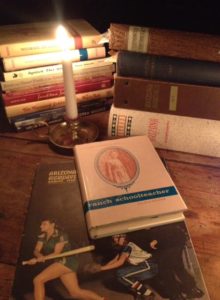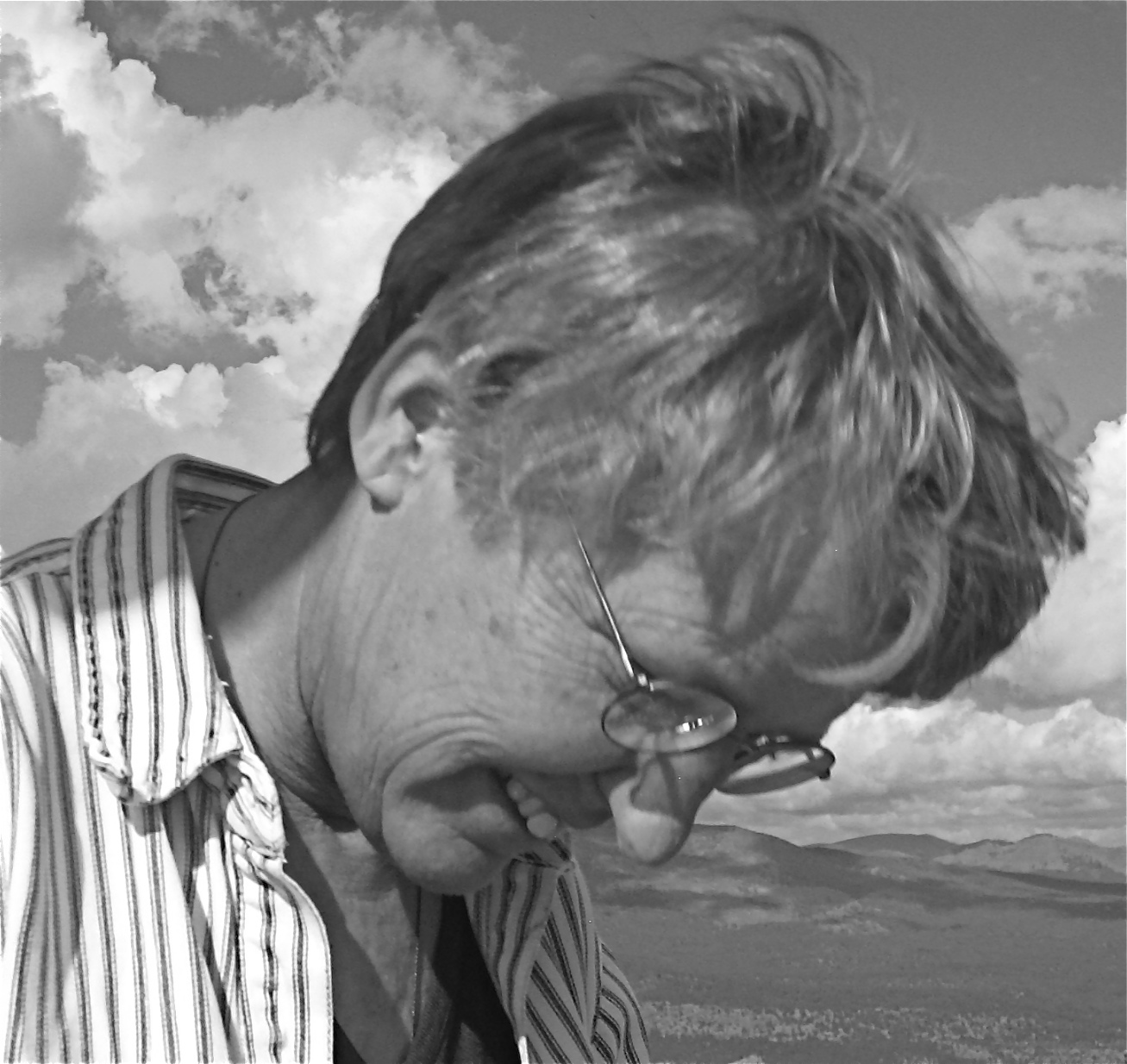 I was just standing on the edge of the stopped again by deer tracks. I like to stand with my feet on deer tracks. Don’t ask me why. Don’t know why. Not a habit, or compulsion, I’m sure. But there I was, out to get air between waves of weather, and I can’t not pause with my new Merrells to stand on sharp, heart-shaped prints in damp ground. Do my toes hear stories of places seen, pathways sought?
I was just standing on the edge of the stopped again by deer tracks. I like to stand with my feet on deer tracks. Don’t ask me why. Don’t know why. Not a habit, or compulsion, I’m sure. But there I was, out to get air between waves of weather, and I can’t not pause with my new Merrells to stand on sharp, heart-shaped prints in damp ground. Do my toes hear stories of places seen, pathways sought?
Mostly my walking today browses through old Arizona Highways. I am feasting on my collection of pages that show the state in 1948 or 1953 or l968. Look at that pre-dam river in the Canyon! Look at the little airport in Phoenix called Sky Harbor! What a strange story about plans to use low-level nuclear detonations in Graham County in order to leach out copper from broken rock. (Project Sloop never got funded by Congress, thank goodness!) And, oh my. I’ve heard stories of the July Fourth powwows in Flagstaff, and finally I see photos of Navajo dancers and cowboys bulldogging where people now play summer softball at the end of Cherry Street.
A two-page spread about Fred Harvey causes me to bend close to the faces in a small black and white photo of Harvey Girls, Kingman, 1930. I knew a Williams Harvey Girl. When I worked the fire lookout there an old woman would call me on the phone to ask about the wind speed and smoke. It was Chris Magill, who had waitressed in that iconic black and white outfit, but then also worked lookouts for more than 35 years on the Kaibab National Forest. “At 81 she would leave her cane on the last landing, bringing her dog up in a basket,” a local fellow told me. That summer I imagined her in her rooms below, looking up to the tower at 9,256 feet; I didn’t mind her calling to get her lookout “fix.” I’d tell her about the bears and turkeys I’d spotted and how the smoke from the train to the Grand Canyon fooled the new guy on the Victor Unit Volunteer Program. One morning she wanted me to know about a crumpled newspaper article she’d saved in a drawer. “It says this ranger got struck by lightning seven times!” I’m glad neither she nor I ever took a bolt to the head, and I marvel at her path from serving up meals to train passengers to spying birds and smokes on a mountaintop. “A wonder of an Arizona life,” I murmur and get up to fix and serve a toasted cheese sandwich. I use a cloth napkin as if I’m a rich passenger on the Santa Fe needing to be pleased.
Returned to my chair by the space heater, I turn pages until a woman on horseback looks back at me. I know this photo! My old editor when I freelanced in Phoenix, Bud Dewald, took the picture, and I have a 5 inch by 7 inch of it in a book his wife gave me. It’s Eulalia Bourne. I’d read her stories about teaching in country schools while running a ranch in pre-World War II southern Arizona, but I didn’t know she started in a one-room school along Beaver Creek when she was still in her teens in 1910. Must have a closer look, I think, and pull myself out from under a shawl to scan my library. Yes. I’m transfixed to learn she was getting through an unhappy marriage on Humbug Creek south of the Bradshaw Mountains when a teacher from Walnut Grove recruited her. After months of tutoring she needs to take the state qualifying exam in Phoenix. “I walked nine miles to Castle Hot Springs, took the stage to Congress Junction and from there, the train to Phoenix,” she wrote. There she bought six donuts for a nickel to get her through the two days of testing. And she passed! And then she had to borrow money to navigate the train ride and dirt road to get her to her first gig in the Verde Valley. “There I reached maturity. I found freedom and friendships and a life work,” I read in Ranch Schoolteacher by Bourne (copyright 1974, University of Arizona Press.) After two terms there is a setback, however. She is fired by the chairman of the school board for dancing “the one-step” at a ranch party. Too risqué, too jazzy, is the one-step. I wonder who could teach it to me, I think, turning the page. I sigh, looking out the window at splintery sleet. I’m glad that setback didn’t upend her life, I think. I’m glad she walked on into decades of resonant Arizona life elsewhere.
I fall into sweet dozing in my chair by a window on a wintry hillside. Deer find shelter (I hope) as the temperature drops. Old Arizona Highways clump around my elbows and feet. Photos waver in my pre-dreaming napping. What a cool picture of Lake Havasu City’s London Bridge when it was still an arc of stones over the Thames in London. Oh look: 15 people hold the edges of a giant Navajo rug outside a trading post in Winslow. It’s a September 1949 story by Mabel Funk, a woman I met in Phoenix in the ’70s. I’d seen an ad in the paper for a tub-size Whirlpool bath for sale. I found the seller rolling her wheelchair up and down the length of a long trailer. When Mabel heard I had a darkroom she talked me into taking photos for the journalism she was still doing, though multiple sclerosis kept her at home. I was legs for Mabel for a decade, taking my camera to the people she talked to by phone. I’d serve her up sharp 5 inch by 7 inch photos for publication; she’d pay me and serve me up stories of her walking days in Arizona, like the time she went to the bottom of the Grand Canyon to do the census for the government. Not stopped, either, that Mabel. Rich Arizona lives happen, one step at a time, I think before dozing, before resting to thrive another day. Walk on.
Navigation Menu

